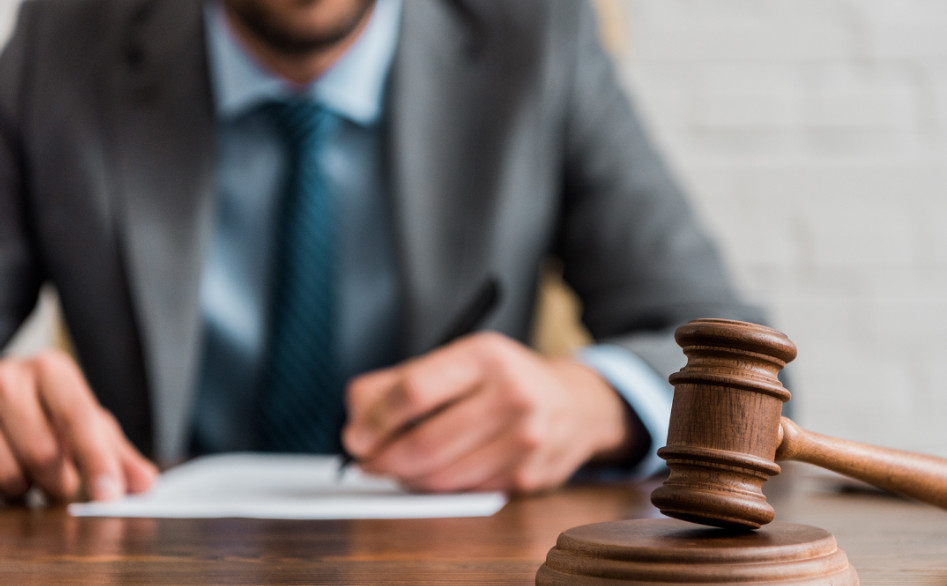Negligence is an action or failure to act when you owe a duty of care to somebody
else.
As a plaintiff, you should demonstrate the following elements to prove the
defendant was negligent:
-
The defendant owed you a duty of care — Everyone should be cautious
when engaging in a task where another person can be injured. For
instance, all California drivers must take care of all road users.
-
The defendant breached the duty of care — In California, the breach
is established when a defendant violates a law. For instance, a
police report can indicate that a driver was following you too
closely, rear-ending your car.
-
Causation (the breach of duty caused your injuries).
-
You suffered damages like lost wages, pain and suffering, lost wages,
medical expenses, lost consortium, and emotional distress.
Statute of Limitations
A statute of limitations is the deadline for filing your personal injury claim.
Generally, the lawsuit is no longer valid once the SOL on a legal case
runs out. In other words, the court will not hear the case, and you will
lose your right to compensation.
In California, the statute of limitations for personal injury claims is two
(2) years from the date of the accident. However, some exemptions can extend
the timeframe when the SOL clock starts ticking.
Plaintiffs acting legal action against a government employee or entity should
file their case within six months and comply with strict procedural rules.
Comparative Negligence Law
In a personal injury case, you seek monetary damages from the responsible party.
If the defendant is entirely accountable for your accident, you will receive
100% of your damages. Nevertheless, what would occur if you were also liable
for your injuries?
Comparative negligence law is a doctrine that shares fault between parties.
The jury will then lower your damages based on your portion of negligence
that caused the injuries.
Typically, the judge or jury determines the degree of responsibility.
If the at-fault party claims that your negligence caused the accident, they
should establish the following:
If the defendant successfully establishes the above, your damages will be reduced
by the portion of your accountability.
Sometimes at least two parties are responsible for an accident. In this case,
comparative negligence law works the same as when there is one defendant.
The jury will apportion fault between all parties, including multiple defendants
and the plaintiff.
How Long Does It Take to Settle Your Case?
Typically, accident victims and their families ask how long their case will
take to close. Most of them want to resolve the matter and return to their
daily life as soon as possible.
Unfortunately, there is no exact answer to this question. The duration depends
on several factors like:
-
The seriousness of the injuries — Before the damages are fully calculated
and your claim's value determined, you need to reach maximum medical
improvement. Maximum medical improvement is when the physician
believes that you have fully recovered. The more severe your injuries
are, the longer it takes to reach maximum medical improvement.
-
Your claim's value — Claims worthy of a lot of money are hard to resolve
quickly. The more money involved, the higher the stakes for the
insurer and the higher the incentive for the insurance provider
to reduce the claim's value.
-
If you choose to resolve the matter through alternative dispute resolution
methods like arbitration or mediation, the case can be closed in
months. On the other hand, filing a lawsuit can take longer.
Are There Caps in Personal Injury Cases?
Generally, the law does not place a cap on compensatory damages. The jury can
award any reasonable and fair amount in the case.
However, medical malpractice cases are an exemption. They have a cap of $250,000
on pain and suffering and other non-economic damages. The limit applies
irrespective of the number of defendants and how severe your injuries are.
While punitive damages do not have a cap, the award should not be grossly arbitrary
or excessive. Punitive damages are designed to punish the at-fault party
for their acting with fraud, oppression, or malice.
Understanding the Lawsuit Process
If you have sustained injuries caused by a negligent party, this could be your
initial encounter with an insurance adjuster. The process is complicated
and confusing. Understanding the lawsuit process can reduce impatience
and stress.
-
Hiring a Lawyer and Seeking Medical Attention
One essential step you need to take immediately after your accident is seeking
medical care. You will receive treatment for the injuries and have medical
records of how and when the injuries happened. It can be beneficial when
seeking compensation for losses incurred.
You should also consult with a lawyer who will advise you on the available
legal options and protect your rights. They will also investigate the accident.
Depending on the case facts, it can involve gathering and analyzing evidence
like police reports, medical records, surveillance videos, and witness
statements. They can also engage expert witnesses.
-
Demand Letter
The lawyer will draft a demand letter using the collected details and issue
it to the defendant's insurer. A demand letter comprises case facts, why
you are taking legal action, and demands compensation.
It initiates a negotiation process, and the insurance provider counters the
demand letter with a settlement offer. Most personal injury claims are
settled through settlement. The likelihood of resolving your case through
settlement increases when represented by an experienced and seasoned lawyer.
-
Filing a Lawsuit
If the insurer refuses to pay a fair and reasonable settlement, your lawyer
will file a lawsuit. Generally, this happens when:
Next, the involved parties move to discovery, where every side seeks details
about the matter. Typically, discovery takes the following forms:
-
Interrogatories.
-
Requests for admission.
-
Depositions.
Your lawyer can also engage an expert witness to strengthen the case. For instance,
if the fault is disputed, the lawyer can hire reconstruction experts to
establish that you did not cause your accident.
Settlement negotiations continue during the pretrial phase. If the involved
parties disagree, the judge can order mediation. Generally, a neutral third
party will review your case and listen to all parties' arguments. Then
the mediator will try to help these parties reach an agreement.
-
Trial
The injury case will proceed to trial if the parties cannot settle the matter.
Your personal injury lawyer will present an opening statement, followed by
the defendant's lawyer. Then the at-fault party will introduce their witnesses
and evidence. Your skilled lawyer will cross-examine the defense witnesses.
All parties will also present their closing argument asking the jury to
find in their favor. Finally, the jury will render its verdict.














